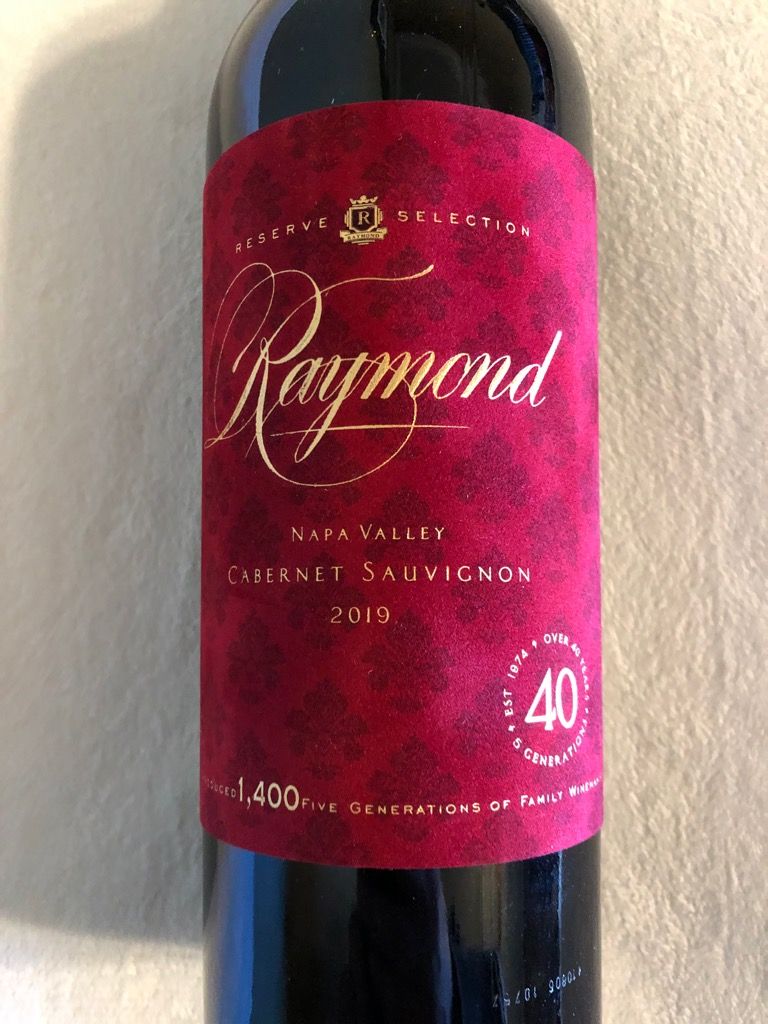
External search
Google (images)
Wine Advocate
Wine Spectator
Burghound
Wine-Searcher
Vintages
2021
2020
2019
2018
2017
2016
2015
2014
2013
2012
2011
2010
2009
2008
2007
1998
1995
1992
1991
1990
Show more
From this producer
Show all wines
All tasting notes
|
| Drinking Windows and Values |
| Community Tasting History |
| Community Tasting Notes (average 88.7 pts. and median of 89 pts. in 7 notes) - hiding notes with no text | | | Tasted by alohaboys on 3/1/2014 & rated 89 points: Consistent with other notes. Finish surprisingly long (3401 views) | | | Tasted by cmaldoon on 10/21/2012 & rated 90 points: Accessible fairly quickly. A bit of bottle funk that quickly resolves into a warm aged cherry with a hint of vanilla. This bottle threw a lot of dark sediment. It was a nice aged wine that anyone could appreciate. Not especially complex, but solid. It held up very well over 3 hours showing best 2 hours in. This bottle was very consistent with other aged Raymond's I have had. I'll buy this (and any 15+ year old Raymond) at $30 any day (5520 views) | | | Tasted by ecola on 7/7/2012 & rated 87 points: Smells oxidized. On the palate there is still dark fruit, a little cocoa, and surprising acidity. Past prime, but still drinkable. (4976 views) | | | Tasted by Awilcox on 12/27/2011 & rated 93 points: Nice. peppery nose, smooth as silk, dark berries, long berry and leather finish, just wonderful (5083 views) | | | Tasted by rloomis on 9/21/2008 & rated 89 points: blk cherry pipe tobacco, raspberry truffle. Various degrees of decomposing redwood appeared for a while after opening up, then disappeared again. A little past prime, but this bottle was still in great shape. (6078 views) | | | Tasted by rmodak on 11/24/2007 & rated 84 points: Probably past its prime, it showed raisiny black cherry, tobacco, leather, with a silky texture and fruit fading on the finish. Very well balanced, so this was likely a very good wine 5 years ago. (2876 views) |
| Raymond Producer website
Producer website
Producer website
Producer website
Producer website
Producer website
Producer websiteCabernet SauvignonCabernet Sauvignon is probably the most famous red wine grape variety on Earth. It is rivaled in this regard only by its Bordeaux stablemate Merlot, and its opposite number in Burgundy, Pinot Noir. From its origins in Bordeaux, Cabernet has successfully spread to almost every winegrowing country in the world. It is now the key grape variety in many first-rate New World wine regions, most notably Napa Valley, Coonawarra and Maipo Valley. Wherever they come from, Cabernet Sauvignon wines always seem to demonstrate a handful of common character traits: deep color, good tannin structure, moderate acidity and aromas of blackcurrant, tomato leaf, dark spices and cedarwood.
Used as frequently in blends as in varietal wines, Cabernet Sauvignon has a large number of common blending partners. Apart from the obvious Merlot and Cabernet Franc, the most prevalent of these are Malbec, Petit Verdot and Carmenere (the ingredients of a classic Bordeaux Blend), Shiraz (in Australia's favorite blend) and in Spain and South America, a Cabernet – Tempranillo blend is now commonplace. Even the bold Tannat-based wines of Madiran are now generally softened with Cabernet SauvignonUSAAmerican wine has been produced since the 1500s, with the first widespread production beginning in New Mexico in 1628. Today, wine production is undertaken in all fifty states, with California producing 84% of all U.S. wine. The continent of North America is home to several native species of grape, including Vitis labrusca, Vitis riparia, Vitis rotundifolia, and Vitis vulpina, but the wine-making industry is based almost entirely on the cultivation of the European Vitis vinifera, which was introduced by European settlers. With more than 1,100,000 acres (4,500 km2) under vine, the United States is the fourth-largest wine producing country in the world, after Italy, Spain, and France.California2021 vintage: "Unlike almost all other areas of the state, the Russian River Valley had higher than normal crops in 2021, which has made for a wine of greater generosity and fruit forwardness than some of its stablemates." - Morgan Twain-Peterson Napa Valley Napa Valley Wineries and Wine (Napa Valley Vintners)Napa ValleySt. Helena |
|




